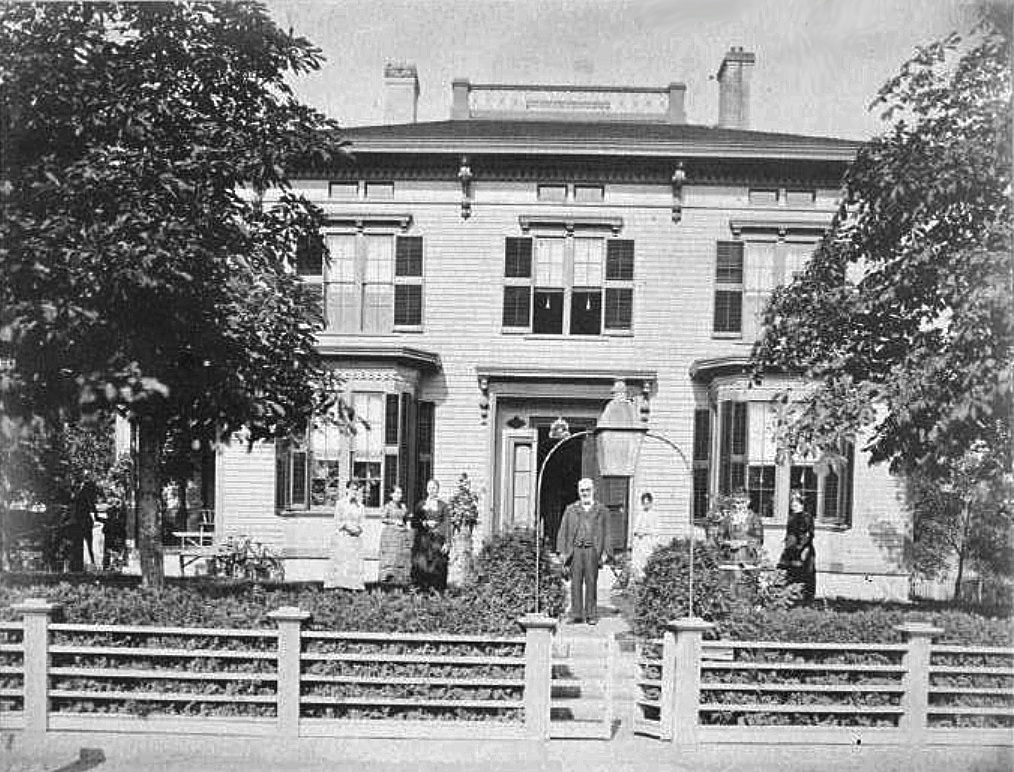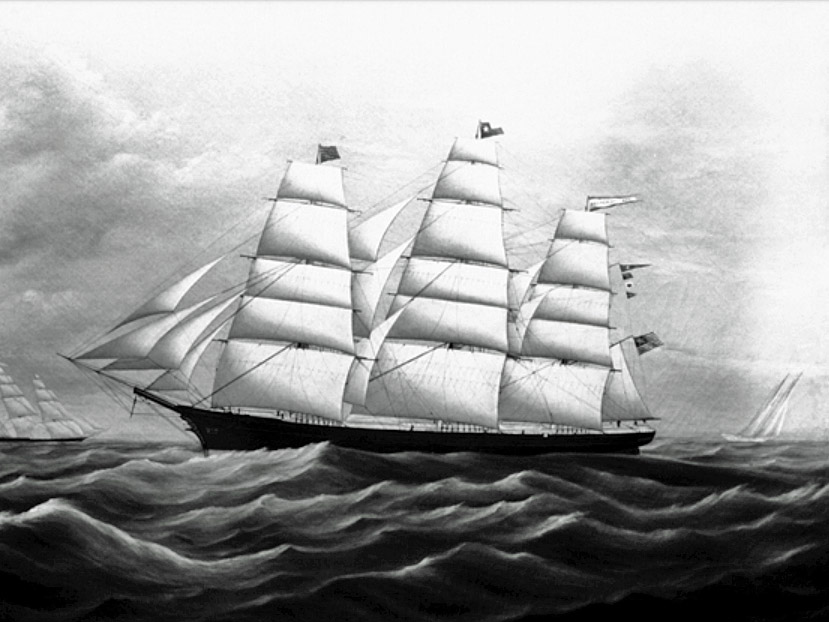There is an expression, “Wooden ships and iron men.” The expression came from a book of poetry published in 1933 by Rosemary and Stephen Vincent Benet titled Clipper Ships and Captains.
There was a time before our time,
It will not come again,
When the best ships still were wooden ships,
But the men were iron men.
Today Wooden Ships and Iron Men is the name of a popular board game but for our historical purposes, its meaning is about the iron men who sailed the tall wooden ships during the age of sail. They were tough men; they had to be because it was a hard life. Most voyages took months; some took years, so for long periods a sailor was away from home. The food was usually atrocious and sanitation non-existent. Diseases such as scurvy were rampant and the discipline harsh, particularly on naval vessels. When a captain had a reputation as a hard driver you knew he had to have been tough as nails.

According to Carl Cutler, of Mystic Seaport, one of the hardest drivers to ever walk the quarterdeck was Captain John E. Williams, known as Kicking Jack Williams. But as tough as he was on his crew, Kicking Jack got results for the ship owners. In 1859-60 in command of the clipper ship Andrew Jackson, he set a sailing record which still stands today of 89 days, 4 hours from Sandy Hook, New Jersey to San Francisco. This prominent Mystic, Connecticut captain was memorialized in an old sea shanty sung by American crews as they toiled aboard their ships.
Tis larboard and starboard on deck you will sprawl,
For Kicking Jack Williams commands the Black Ball!
John E. Williams was born, one of ten children at the busy Irish port of Cardigan, Wales in 1816. He went to sea as a cabin boy at age fifteen on a trading vessel bound for America. He met Captain Isaac D. Holmes who took him under his wing and brought him to his home in Mystic, Connecticut. There Williams worked on fishing and coastal vessels and at age eighteen took command of a local fishing vessel. His next commands were of the 74-ton Mystic sloop Ann B. Holmes, the 144-ton brig Ann Eliza, the 383-ton Pilgrim for the Hurlbut Line, and his first clipper ship, the 649-ton Eliza Mallory, operating as a Mobile, Alabama packet. In 1855 he took command of the ship that would bring him fame and fortune, the medium clipper, Andrew Jackson.
The Andrew Jackson was built in the Irons and Grinnell Shipyard at Mystic, Connecticut and launched in March of 1855. Her principal dimensions were a length of 220 ft., a beam of 41 ft., a draft of 22 ft. and displaced 1679 tons. Captain Williams took command and sailed her to San Francisco in 128 days. This was the start of many fast passages the Andrew Jackson achieved under his command.
1855 San Francisco to New York, 88 days
1856 New York to San Francisco, 101 days
1857 San Francisco to New York, 101 days
1858 New York to San Francisco, 101 days
1858 San Francisco to New York, 87 days
1858-59 New York to San Francisco, 103 days
1859 San Francisco to New York, 101 days
1859 New York to San Francisco, 89 days 4 hours
1860 San Francisco to New York, 106 days
There is some controversy about the1859 record time of 89 days 4 hours because the pilot was late and the anchor-to-anchor time was 90 days 12 hours. This time would put her behind the Flying Cloud’s time of 89 days 8 hours anchor to anchor. However, the voyage was celebrated as a record and he was hailed by the local merchants association which presented him with the Commodore’s Pendant for the shortest voyage. When he returned to New York John Brower, one of the ship’s owners presented him with a fine chronometer engraved with the date and the time of his run. He treasured the award for the rest of his life.

After the 1860 voyage to New York, Captain Williams retired at the age of forty-two from the packet trade. The fame his command of the fastest clipper ship in the world brought helped to establish him in business. The Andrew Jackson was not as lucky as her former captain for she was wrecked on a reef in the Gaspar Straits in Indonesia only eight years later.
The boom years of the clipper era didn’t last much longer than the ship. Clipper ships were designed for speed in response to the demand for faster delivery of tea from China and swift passage to the gold fields of California and Australia. Clippers required large crews were expensive to operate, and their sleek hulls couldn’t carry much cargo. The era started about 1848 and ended around 1869 with the advent of steamships and the opening of the Suez Canal.
Kicking Jack Williams became a successful businessman in his hometown of Mystic, Connecticut where he built an elegant mansion as befitting the holder of the New York to San Francisco record. The 1860 census shows John E. Williams living in Mystic with his wife Mary, son John E., daughter Mary E., and son Charles, along with an Irish servant, Ann Dougherty.
In 1861 he took command of the steamship Haze which was soon chartered by the War Department for the Civil War effort. In 1864 he was part owner and master of the steamer Aphrodite and the steamer Cassandra which he commanded on several coastal voyages.
In a great tragedy, his oldest son John was a purser onboard the Aphrodite when she wrecked on the coast of North Carolina. Surviving the wreck, he secured passage aboard a schooner bound for New York. Unfortunately, the schooner was captured by the Confederacy and he was imprisoned at Florence, South Carolina. He escaped but was never heard from again.
In 1868 Captain Williams formed a new firm, J.E. Williams and Co., which owned numerous businesses and got into politics. He served in the Connecticut State Legislature, helped organize the Mystic Fire District, and was active in the Masonic Lodge. The captain died of pneumonia on March 4, 1901 at the age of 85. According to his obituary, a large number of shipmasters, active and retired, were among the company at the funeral. The body was deposited in the family vault in the Elm Grove Cemetery. That Mystic lost a valuable citizen is the universal sentiment of the community.
There was not a word about his reputation as Kicking Jack Williams.
